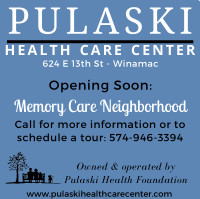The CDC COVID Data Tracker reports that nationally, COVID test positivity was 7.5 percent the week ending Dec. 21, up from 5.6 percent the previous week. Emergency room visits for COVID-diagnosed patients were 0.9 percent, up 0.7 percent from the week before. The percent of all deaths in the U.S. due to COVID was 1.1 percent, up 0.1 percent from the previous week.
To obtain a COVID vaccination or booster shots, or COVID test kits, consult with your healthcare provider or pharmacy. Or visit the Indiana Department of Health website page on Where to Find a COVID-19 Vaccine.
CDC report on level of (all) respiratory illness activity
What to know
- As of December 27, 2024, the amount of acute respiratory illness causing people to seek healthcare is high nationally, (although Indiana levels are moderate). See CDC map here.
- COVID-19, seasonal influenza, and RSV activity continue to increase across the country.
CDC weekly national summary, reported Friday, Dec.27, 2024.
COVID-19, seasonal influenza and RSV activity continue to increase across the country.
COVID-19 activity is increasing in most areas of the country, with high COVID-19 wastewater levels and increasing emergency department visits and laboratory percent positivity. Based on CDC modeled estimates of epidemic growth, we predict COVID-19 illness will continue to increase in the coming weeks as it usually does in the winter.
There is still time to benefit from getting your recommended immunizations to reduce your risk of illness this season, especially severe illness and hospitalization.
CDC expects the 2024-2025 COVID-19 vaccine to work well for currently circulating variants. There are many effective tools to prevent spreading COVID-19 or becoming seriously ill.
- Seasonal influenza activity continues to increase across the country. Additional information about current influenza activity can be found at: Weekly U.S. Influenza Surveillance Report | CDC
- RSV activity is high and continues to increase in most areas of the country, particularly in young children. Emergency department visits and hospitalizations are increasing in children and hospitalizations are increasing among older adults in some areas.
- Vaccination coverage with influenza and COVID-19 vaccines are low among U.S. adults and children. COVID-19 vaccine coverage in older adults has increased compared with the 2023-2024 season. Vaccination coverage with RSV vaccines remains low among U.S. adults. Many children and adults lack protection from respiratory virus infections provided by vaccines.
What to know: Indiana and Pulaski County
- As reported Dec. 27, the amount of acute respiratory illness in Indiana causing people to seek healthcare remains at moderate levels (data collected through Dec. 21). The trend of new respiratory infections is growing in the Pulaski County area, particularly influenza.
- According to the CDC, emergency department visits in the Pulaski County area are growing for flu and COVID, but have leveled off slightly for RSV.
Protect yourself and your community
Looking for guidance?
- Safeguard your health - Get the latest information from Vaccines.gov
- Order 4 free at-home COVID-19 tests today on COVIDTests.gov
- Explore resources and recommendations for older adults - Stay informed and protected
- Review tailored health recommendations for high-risk individuals
- Feeling ill? Take immediate steps to protect yourself and others – Start here
- Have symptoms? Consider wearing a mask
- Take action against germs – Practice good hygiene
- Got questions? Check out our FAQs
Recommended immunizations protect people and save lives
Last year (2023-24), CDC estimates:
Flu vaccination prevented:
- At least 7 million influenza illnesses
- 3.7 million influenza-associated medical visits
- 105,000 influenza-associated hospitalizations
- 3,500 influenza-associated deaths in the United States
COVID-19 vaccines:
- Reduced the risk of severe COVID-19 by about half.
RSV immunizations:
- Reduced the risk of RSV-associated hospitalization by 75% among adults ages 60 years and older.
- Were 90% effective against RSV-associated hospitalization in infants during their first RSV season.







